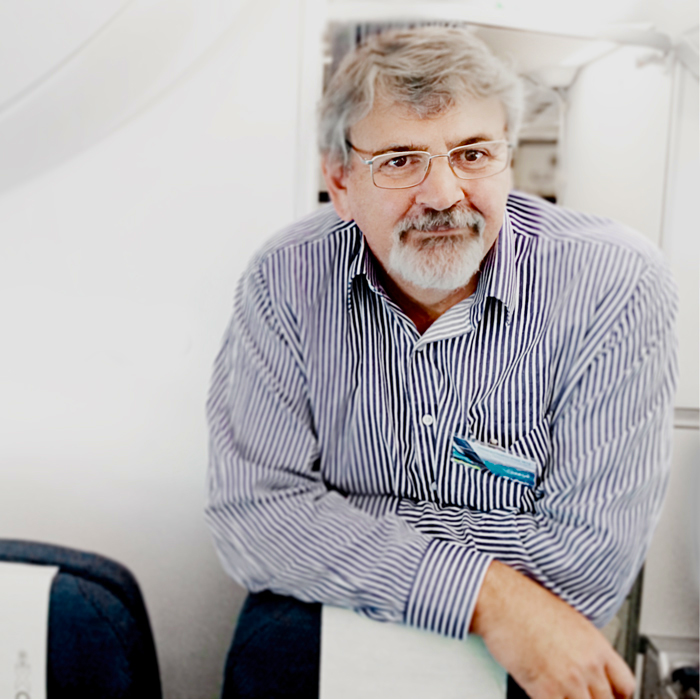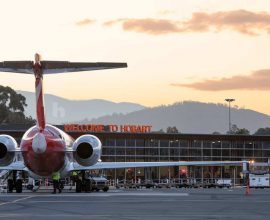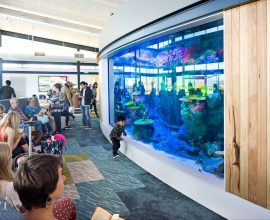Brisbane Airport continues reconciliation journey
Brisbane Airport decided to introduce a Reconciliation Action Plan (RAP) after realising there was an obvious omission in its otherwise extensive stakeholder engagement program.
Although it consulted widely with government, community and customers, there was no regular engagement program when it came to interacting with the area’s oldest and original inhabitants.
Executive General Manager Communications and Public Affairs Rachel Crowley, who came from a tourism background, knew about Reconciliation Action Plans (RAPs) and suggested the concept would be a good platform for the airport.
“It’s a good guide used by many different organisations to help plan their reconciliation journey,” Brisbane Airport Corporation (BAC) Head of Environment and Sustainability Wendy Weir says.
“It came into being because I guess ultimately, we realised there was a missing stakeholder and we wanted to learn how to fulfil that part of our corporate social responsibility.”
BAC is now on its second RAP but the first step in what was to become a significant journey began by contacting the organisation promoting improved relations between businesses and Indigenous Australians: Reconciliation Australia.
Reconciliation Australia offers four levels of RAP: Reflect, Innovate, Stretch or Elevate.
Reflect is the first level in which an organisation prepares itself for reconciliation initiatives before committing itself to specific actions or initiatives.
Weir says the airport considered itself past that level because it already had well-embedded processes for several different stakeholder and community engagement programs.
“We realised we weren’t at the bottom, so we thought the Innovate RAP was more suited to our organisation’s business capabilities.”
The Innovate RAP involves implementing reconciliation. It focuses on developing and strengthening relationships with Aboriginal and Torres Strait Islander communities, engaging staff and stakeholders in reconciliation and looking for opportunities for Indigenous people.
Brisbane obtained a template for the Innovate RAP and held a workshop with Traditional Owners to show them what were the “must haves” in the process and to consult on what else it could do.
“We brainstormed a whole bunch of different things and we came up with some good ideas, some of which were put into our first RAP and some of which still continue into our second,” Weir says.
The ideas included strengthening the presence of Aboriginal art at the airport and how to welcome visitors effectively with either an Acknowledgement of Country or a Welcome to Country.
It also sought to influence retailers to avoid selling Chinese-made Aboriginal art and to put them in touch with local Indigenous suppliers.
“We’re not the first interface that a lot of passengers will have with Indigenous culture, but we looked at how we could facilitate that better,” Weir says.
The airport also began flying the Aboriginal flag and Torres Strait Islander flags on two empty flagpoles meant to be used to salute visiting dignitaries, but rarely used for that purpose.
“The flagpoles were actually so old they had to be fixed,” says Weir.
“But it was a really simple gesture that means a lot to all Australians, not just Aboriginal and Torres Strait Islander people.”
“Australia recognises the Australian Aboriginal and Torres Strait Islander flags, and by not having them there, it is not a true representation of Australia.”
Other ideas, such as improving employment opportunities for Indigenous people and ensuring their participation in procurement, proved to be a longer-term proposition.
BAC does not have a huge staff turnover and Weir says work is still underway to improve how human resources processes deal with attracting and employing Indigenous people.
“If we do have jobs we’re advertising, how can we ensure that we advertise to Indigenous Australians and let them know that they are welcome to apply?” she says.
The airport has only recently gained a procurement officer, and this is another area that is a work in progress.
Weir sees this as an area where positive business relationships can make a big difference, particularly given research shows every dollar spent with an Indigenous-owned business creates $4 in social value.
She says one of the myths that must be busted is that there isn’t enough capacity in the Indigenous supply chain.
Here Weir recommends Supply Nation, which has a register of registered and certified Indigenous-owned companies.
She notes this sort of service has been available for years in the US with the National Minority Supplier Development Council, and the engagement of Indigenous-owned businesses is now well embedded in Australian government processes.
“You can search on the online business directory for a whole heap of different categories,” she says of Supply Nation.
“It could be commercial cleaning, it could be IT services, it could be catering, it could be stationary.
“There’s a variety of Indigenous businesses and you can search by postcode or state.”
Airports can also support Indigenous businesses by introducing an internal procurement policy that requires major contractors to sub-contract a certain percentage of work to Aboriginal and Torres Strait Islander firms, Weir notes.
“You can go to your normal cleaning contractor and you can say we want to engage you, but we need to ensure that a percentage of this contract is sub-contracted to an Indigenous-owned company.
“So they can do joint ventures, they can do all sorts of different things.
“But if you don’t set the standards to begin with you won’t get an outcome — it’s all about what you put in your tender contract.”
Weir says setting up a RAP is rewarding but don’t expect it all to be plain sailing.
For her, the rewards come when she realises the airport is making a difference.
She points to CareerTrackers, a non-profit organisation that creates internship opportunities for Indigenous university students, and how this can make a difference to young people.
She cites the example of a student raised during high school by her grandmother who “was clearly an inspirational woman who wanted her grandchildren to succeed in life”.
“The student was always fascinated with aviation and the grandmother saw this article about Julieanne Alroe, our former CEO of Brisbane Airport Corp.,” she says.
“The grandmother said: ‘Here’s a woman making it in aviation, you could be that person’.
“That was five years before she started her placement, but that one article inspired her to say, ‘You know, I can do it’.
“It’s those stories that make it rewarding for me.”
On the challenges side, Weir observes that dealing with Indigenous disadvantage “is real and it’s hard”.
“Indigenous Australians have suffered intensely from the result of colonisation, past policies, dispossession, prejudice and racism and as a result there’s too much over-representation of Indigenous Australians in the prison system.
“Life expectancy is about 10 years less than a non-Indigenous person in Australia.
“The employment outcomes for Indigenous Australians is so much less than non-Indigenous and there is a huge gap in quality of life and outcomes for these people.
“Dealing with all the legacy issues stemming from that is real and it’s tough.”
Also difficult, says Weir, is making sure the airport does everything that is culturally correct for each Traditional Owner.
“Sometimes we get it wrong or we accidentally offend when we don’t mean to,” she says.
“We are doing this for the right reasons. We may not always get it right but we’re trying.”
Finally, Weir recommends that airports undertaking a RAP make sure that all the achievements from the RAP are catalogued and recognised so that progress can be measured.
Brisbane Airport chose with its second RAP to stay at the Innovate level but aspires to go higher.
“For us, we’re still in the embedding phase,” says Weir.
“We didn’t upgrade to a different level of RAP we kept it at the innovate RAP level because we are still working on it.
“We haven’t got everything right yet.”
Photo: Indigenous students visit Brisbane Airport as part of the QUT SID school program.
By Steve Creedy
About Steve Creedy
 An award-winning journalist, Steve began covering aviation in the United States in the early nineties before returning to Australia later that decade and editing The Australian’s aviation section for 17 years. He is editor of Airline Ratings and has co-authored books on industry initiatives aimed at reducing greenhouse emissions.
An award-winning journalist, Steve began covering aviation in the United States in the early nineties before returning to Australia later that decade and editing The Australian’s aviation section for 17 years. He is editor of Airline Ratings and has co-authored books on industry initiatives aimed at reducing greenhouse emissions.
Steve has joined the AAA to write interesting and informative editorial on the aviation industry.





